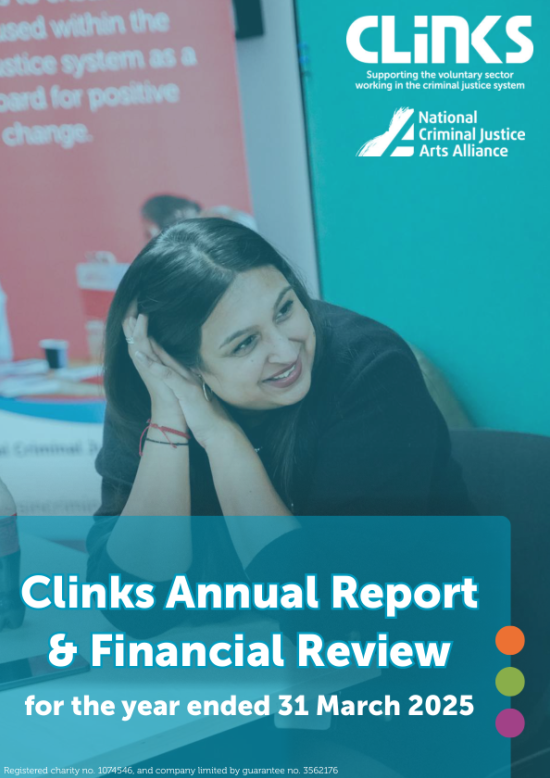Clinks’ Head of Policy and Communications, Jess Mullen, spoke with a representative from the Ministry of Justice (MoJ) to feed into the rapid evidence assessment they are conducting to contribute to the sentencing review announced by Prime Minister Boris Johnson. In this blog, Jess Mullen summarises the key points she highlighted to the MoJ.
In the last month we have seen very swift changes in the direction of sentencing policy. In his final speech as Secretary of State for Justice, David Gauke called on his successor to consider reducing the use of short prison sentences. Less than a month later the Prime Minister signalled a rather different direction of travel, announcing a sentencing review exploring:
- Changing legislation so that people who have committed serious violent and sexual offences spend longer in prison
- Making changes to the rules and procedures for the release of people convicted of serious violent and sexual offences
- More robust community orders, which are tough but tackle the root causes of reoffending.
The consultation process
The review does not have any formal public consultation attached to it. Although any preferred recommendations from the review are likely to be subject to a formal consultation in the future, I raised concerns about the process, its transparency and the ability of the voluntary sector to feed into it and Clinks’ ability to consult the sector before providing input. These concerns echo those raised in the letter written by the Prison Reform Trust to Sir Richard Heaton asking for details of the terms of reference of the review and its consultation process.
Current sentencing
The make-up of custodial sentences is currently polarised. On the one hand, we see the persistence of short sentences which don’t meet people’s needs or facilitate a successful transition back to the community, creating a revolving door. On the other hand, we are also seeing inflating sentence lengths for several types of offences.
Both of these issues contribute to a challenging prison environment. Sentence inflation has led to increases in the prison population, which the current infrastructure is struggling to adequately support. As a result, we have seen increased levels of violence, self-harm, suicide and substance misuse. People serving long sentences do not have adequate access to purposeful activity and support services, with stretched resources being directed towards those facing imminent release. Increased sentence length is the main contributor to the growth of the ageing prison population, who has a specific set of increased needs which, as our report Flexibility is Vital shows, are going unmet far too often. Short sentences leave people without access to services they need, or in fact, their needs could be better met in the community.
There has been increasing concern over sentencer confidence in community sentences reinforced by the well-documented challenges of the Transforming Rehabilitation programme. The voluntary organisations which deliver community services have expressed that they previously had better relationships and visibility with magistrates, who understood their value and the interventions they could offer, but in recent years this relationship has been eroded. This has been impacted by speedy justice and the practice of pre-sentence reports being given verbally without much detail on people’s needs and the kinds of community based options that might be appropriate to meet them.
Who will be affected by these proposed reforms?
We are concerned that because of the way risk is perceived by the courts and police, black, Asian and minority ethnic (BAME) people will be disproportionately affected by the proposed reforms to sentencing for serious offences adding to the existing overrepresentation of BAME people.
In particular, during our conversation we were surprised to be asked questions about the youth estate as we hadn’t realised that this group was in the scope of the review. The youth estate already has alarming levels of disproportionality for BAME people – black boys in particular – which these proposals are likely to exacerbate.
The youth justice system has also made welcome progress in reducing the custodial population and any reversal would be of serious concern. The youth justice system should remain focused on reducing the custodial population, not increasing it. Increasing sentence lengths for children would likely lead to more children transitioning from the youth to adult estate at exactly the point in their development and maturity that, research highlighted by the Transition to Adulthood Alliance has shown, they are more likely to move away from offending behaviour.
Proposals around community sentences could potentially provide positive alternatives to custody for people who commit prolific offences and whose needs, the MoJ’s own evidence has shown, are not met by short term custodial sentences. This group often faces multiple disadvantages including mental health issues, substance misuse and homelessness in addition to contact with the criminal justice system. In addition, many women in contact with the criminal justice system, whose needs have been further shown to go unmet in custody, will fall into this group.
However, any changes to sentences won’t be successful without support to meet the underlying causes of people’s offending. There are evidenced community alternatives, often delivered by the voluntary sector, such as the approach of the Making Every Adult Matter coalition, which supports people facing multiple disadvantage to get the services they need and not fall through the gaps which often leads to contact with the criminal justice system. Similarly women’s centres, as highlighted in the MoJ Female Offender Strategy, provide holistic women centred support that recognises the specific needs of women in the criminal justice system.
A further roll-out of community sentence treatment requirements could be beneficial. The pilot showed good results for mental health treatment requirements but less success for substance misuse treatment requirement. To replicate the success across substance misuse it will require greater investment in those services.
What is the purpose of sentencing?
The review asks if the purpose of sentencing should be punitive, rehabilitative, for the purposes of public protection or reparation. The voluntary sector has varying views on this issue and some would argue that there shouldn’t be a punitive element at all. The sector’s work focuses mainly upon rehabilitation, with much of the sector working on a desistance based model, and Clinks’ view is that this and public protection are mutually reinforcing.
Framing sentencing to address the most serious needs of people, rather than the most serious risks they are perceived to present, would likely create the best long-term solutions for people in contact with the criminal justice system and the communities they are from and will return to. Responding to risk is more likely to lead to a containment-style solution which would be only short-term.
What next?
We will watch the development of the sentencing review closely and keep Clinks’ members informed as it progresses.
What's new
Blogs
Anne Fox CEO of Clinks to stand down after a decade of service
Latest on X
The role is for a leader from an organisation focused on racially minoritised people, with expertise in service delivery, policy, advocacy, or related areas in criminal justice. Racial disparities are present at every CJS stage. This role ensures these voices are central in shaping policy to help address and eradicate them. Apply by Mon 18 Nov, 10am. More info: https://www.clinks.org/voluntary-community-sector/vacancies/15566 #CriminalJustice #RR3 #RacialEquity

